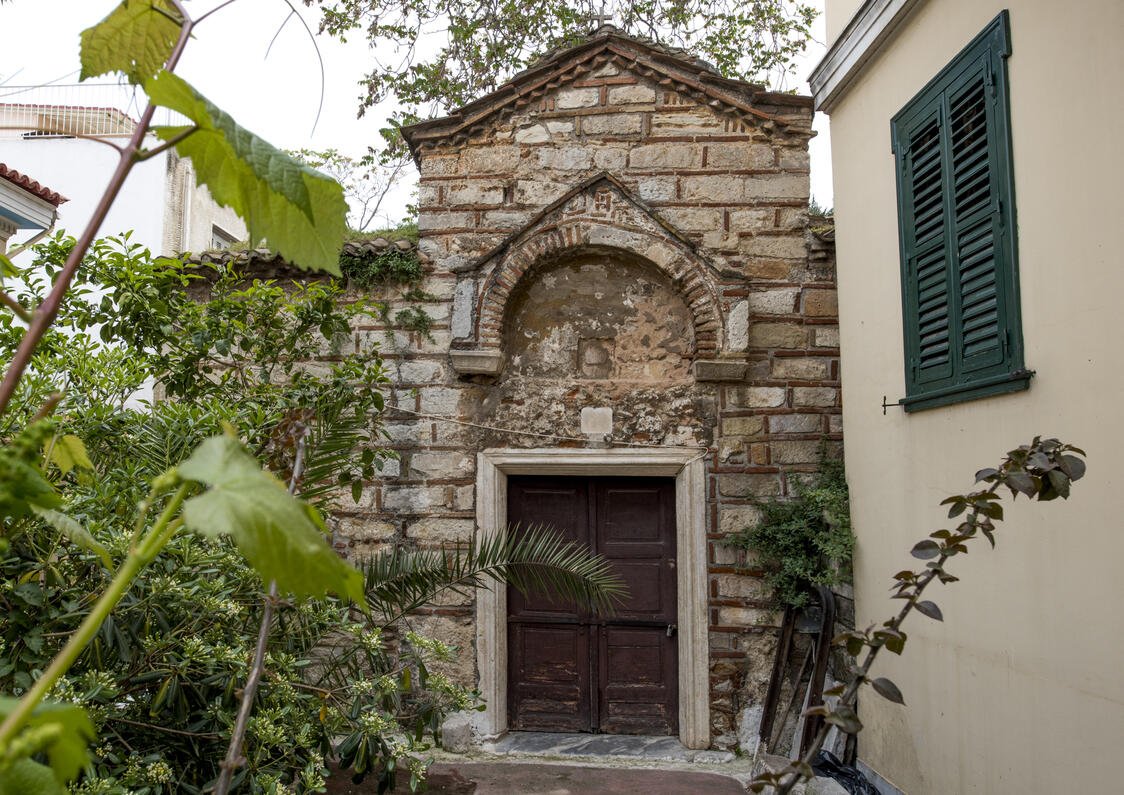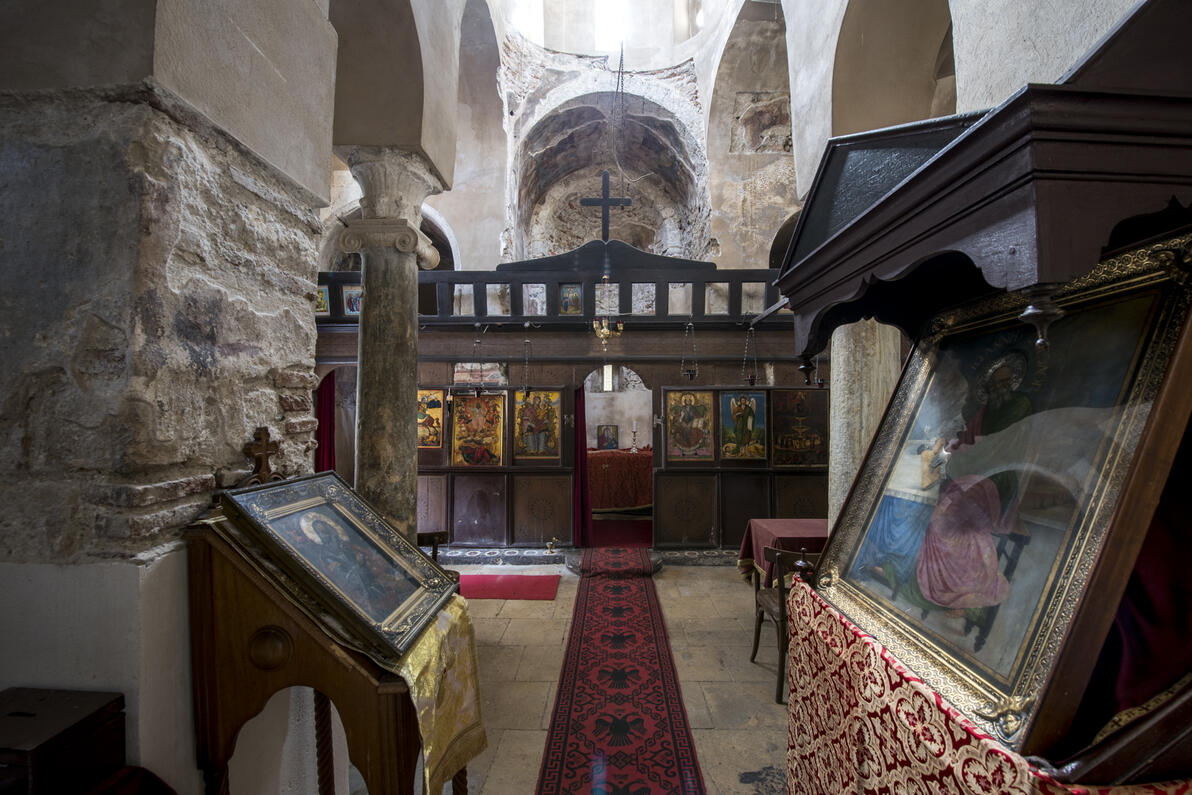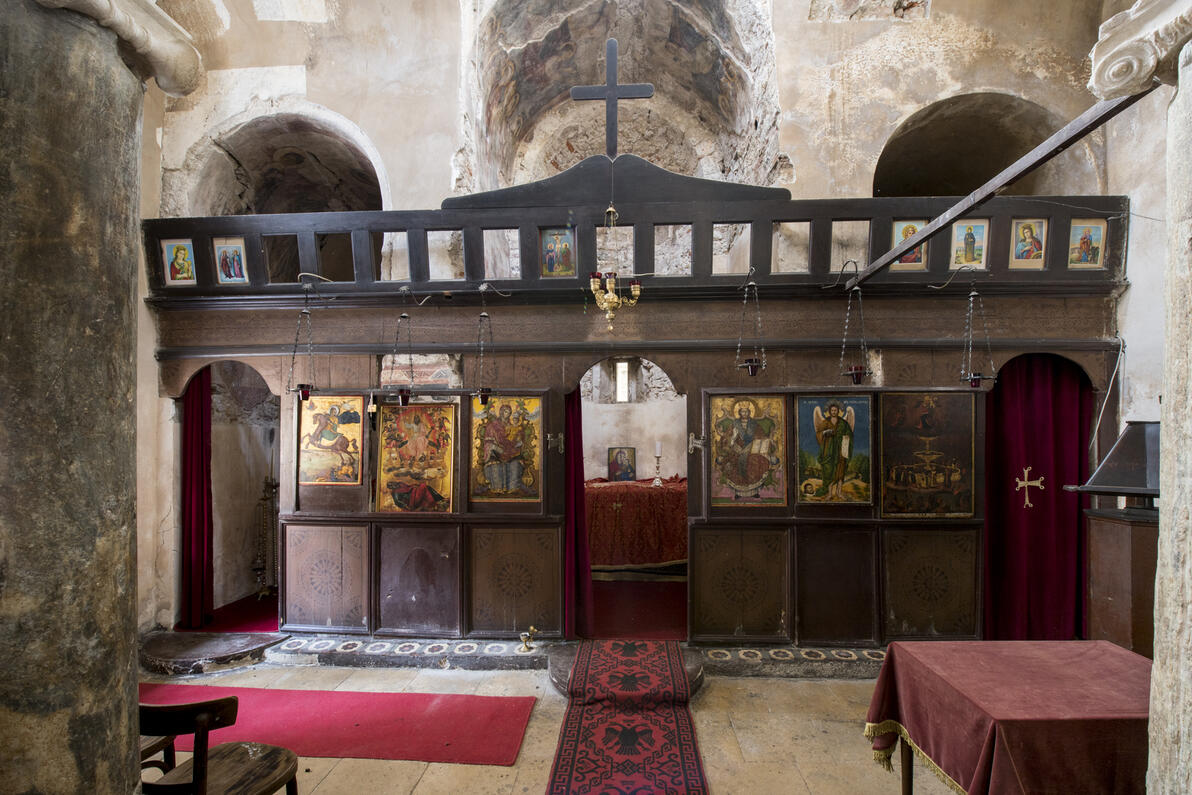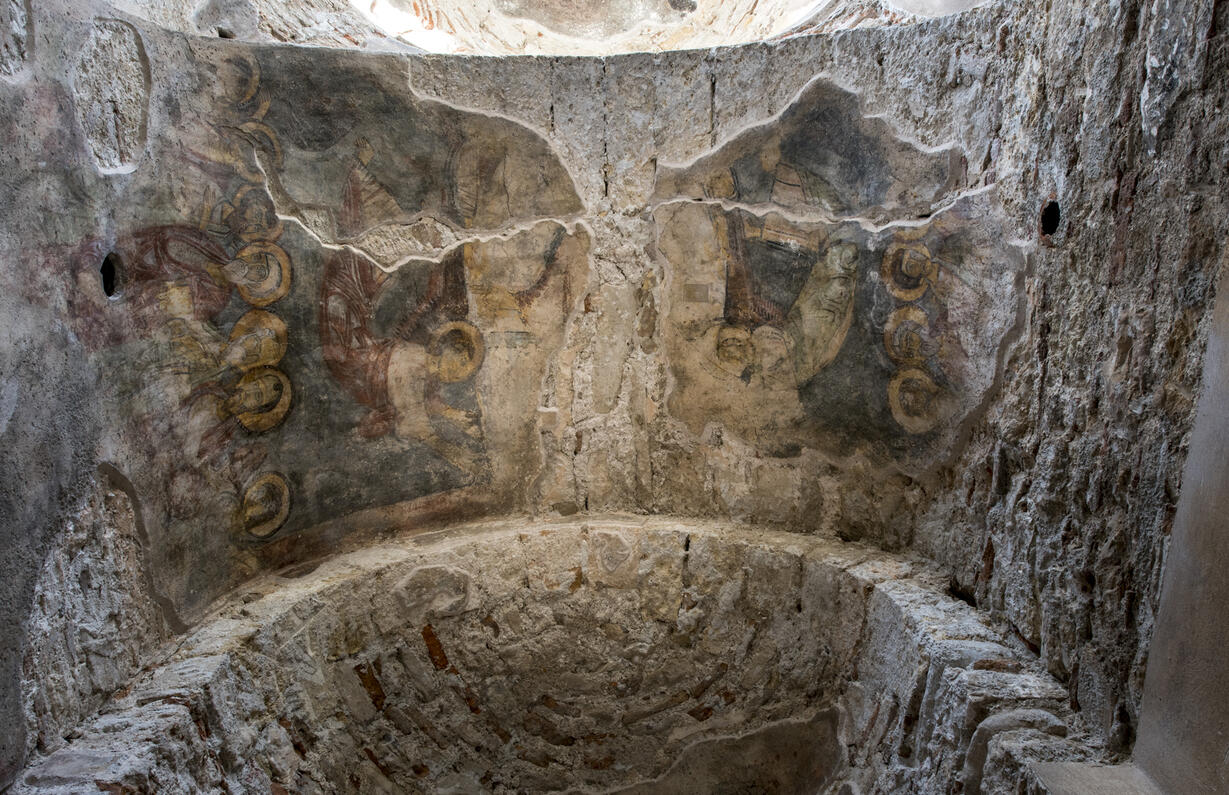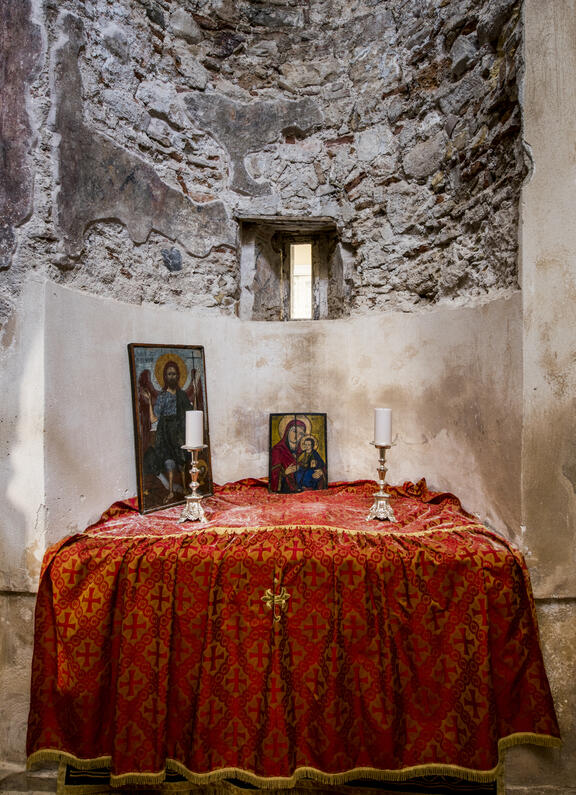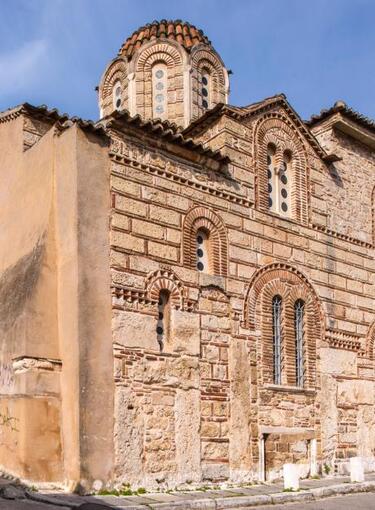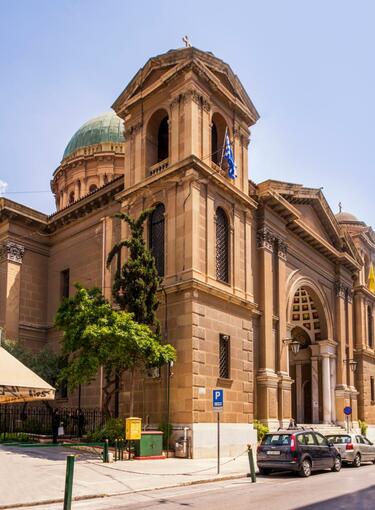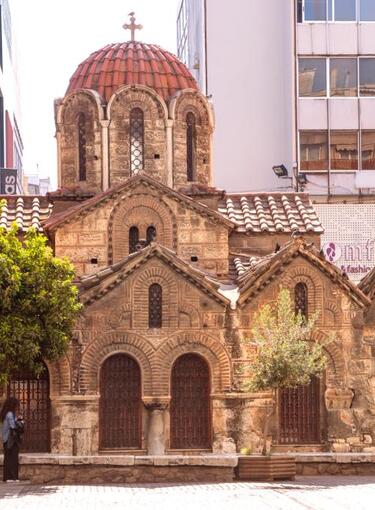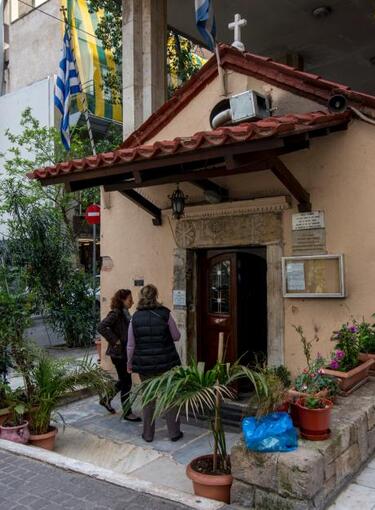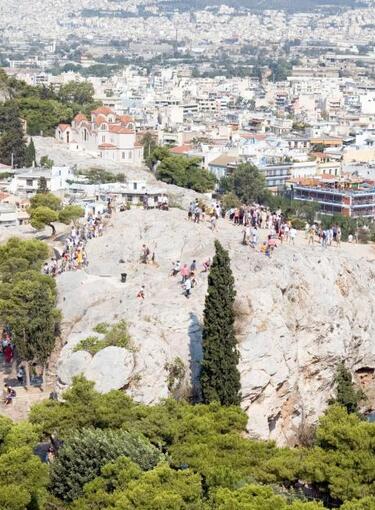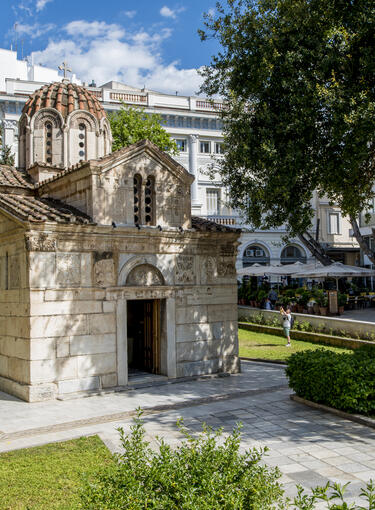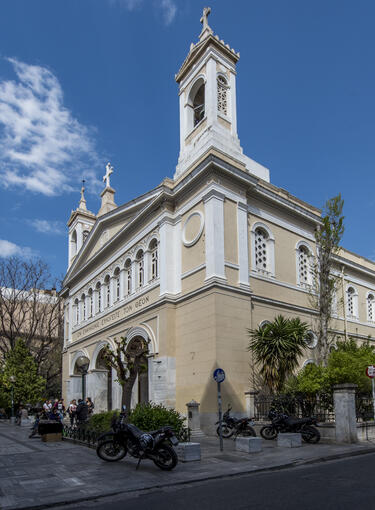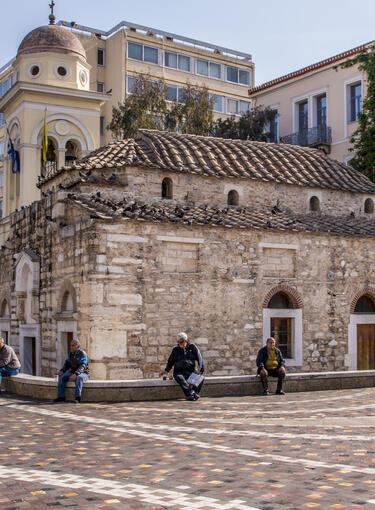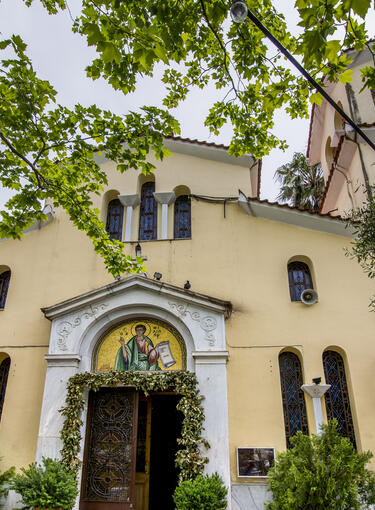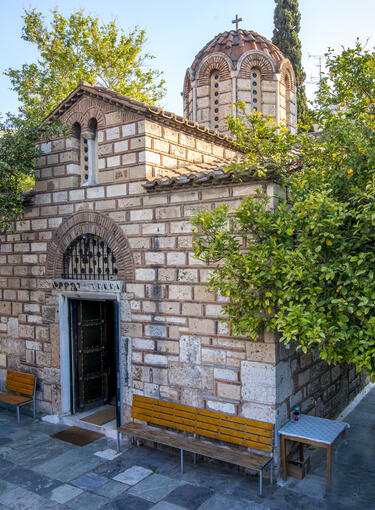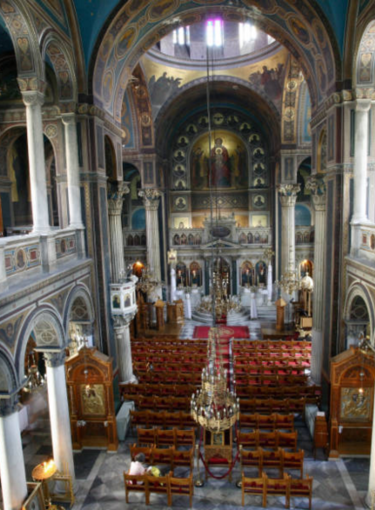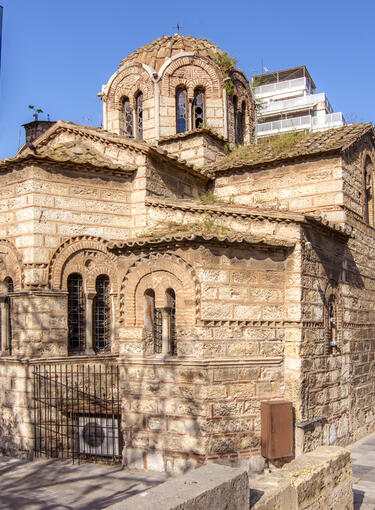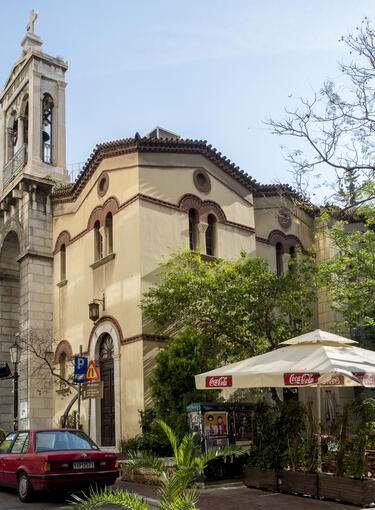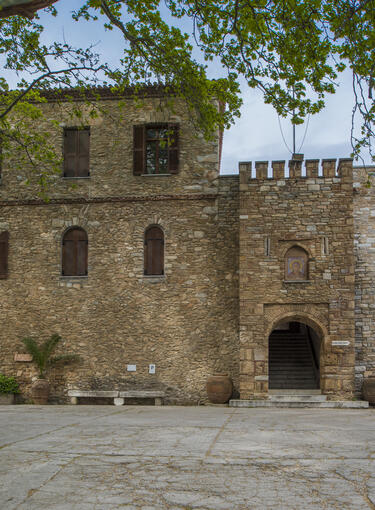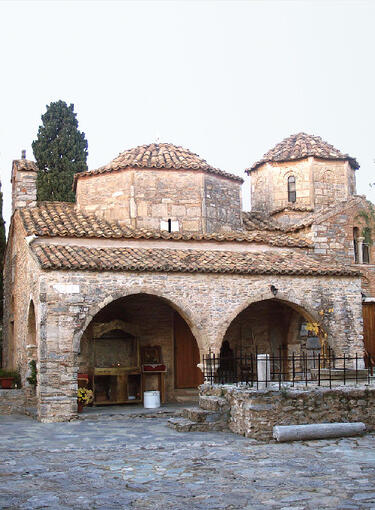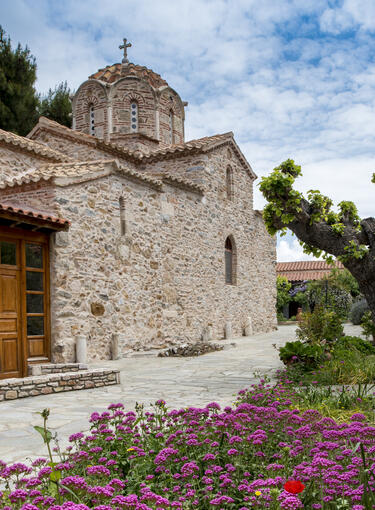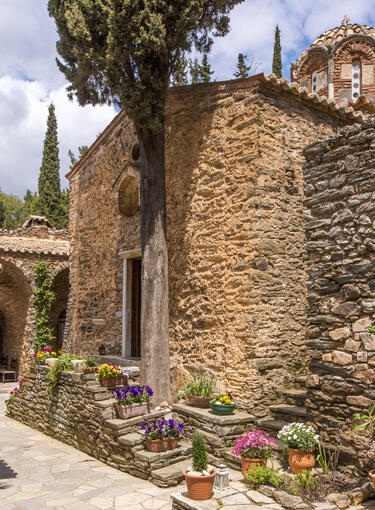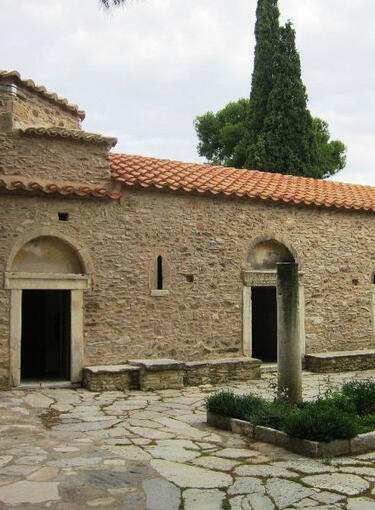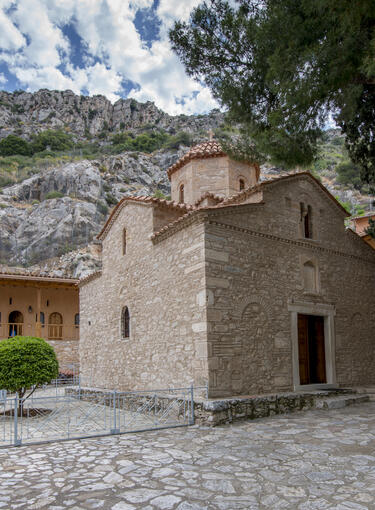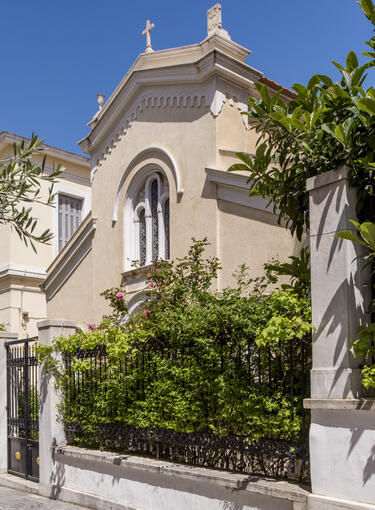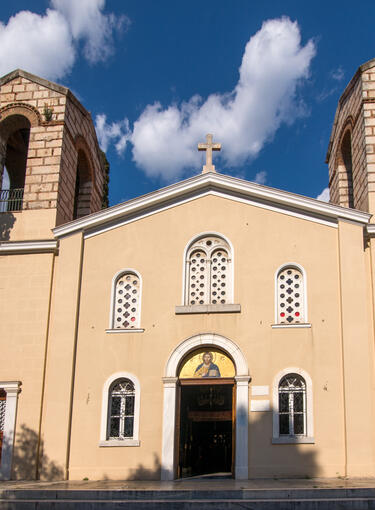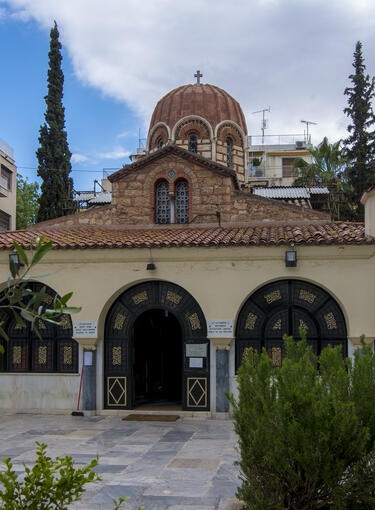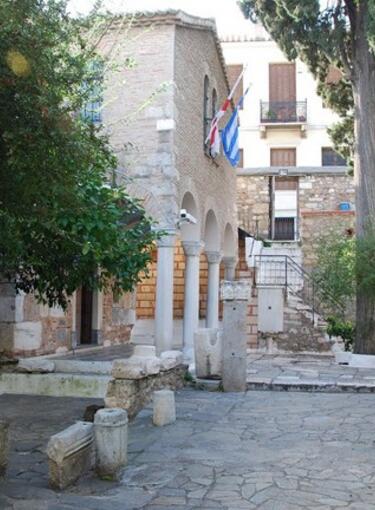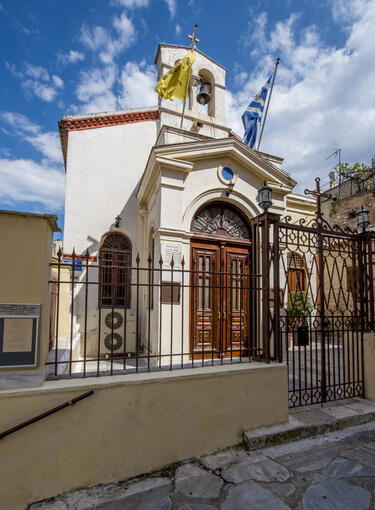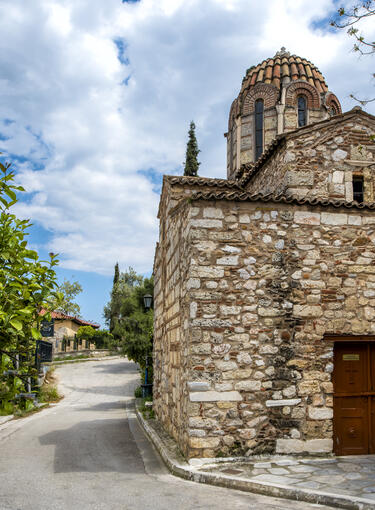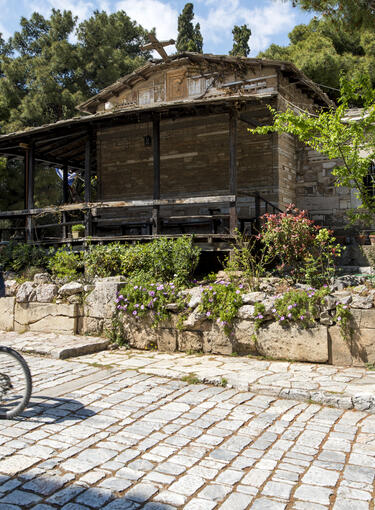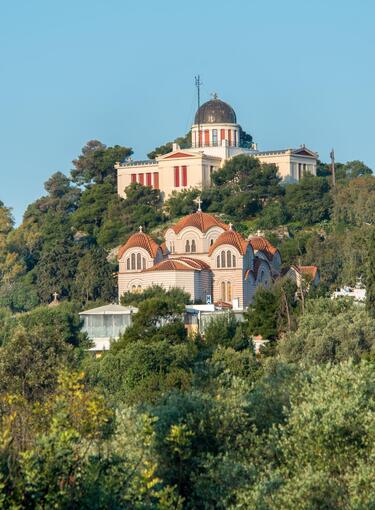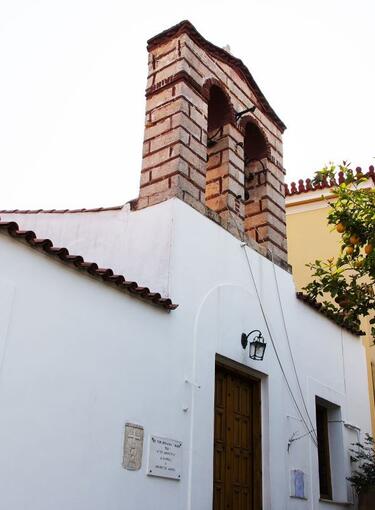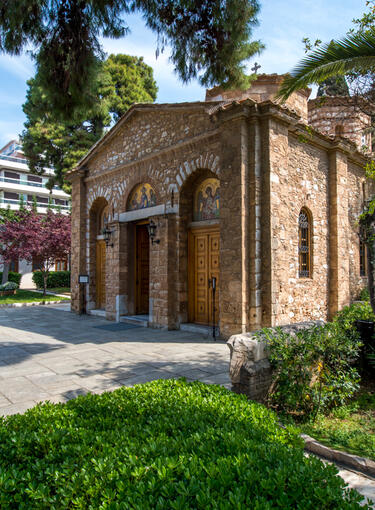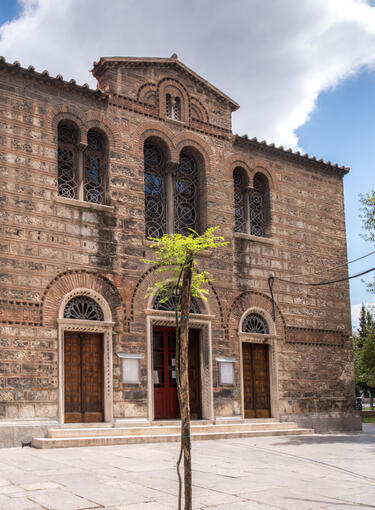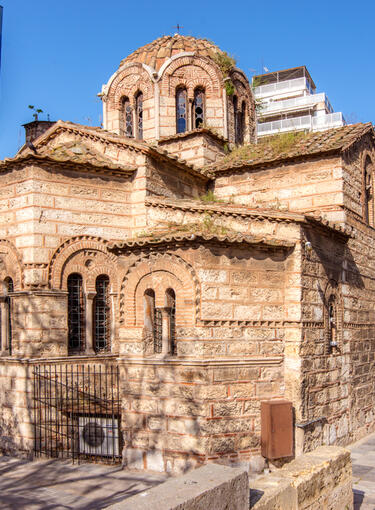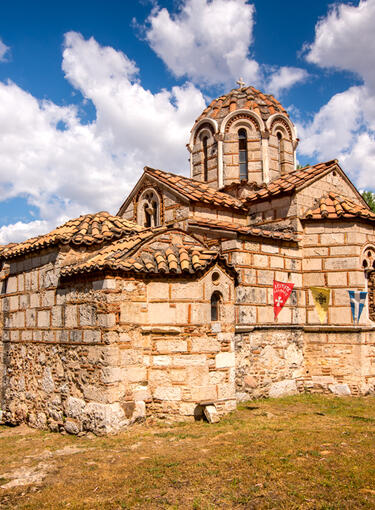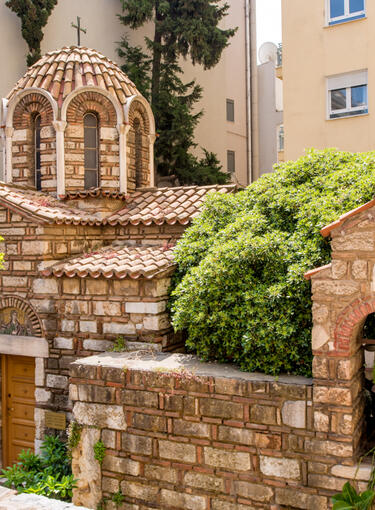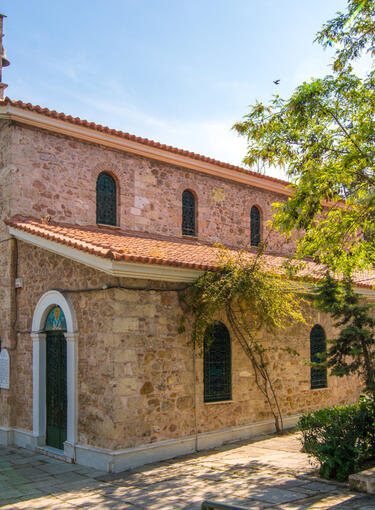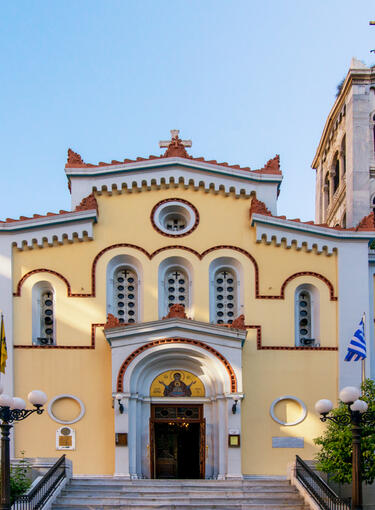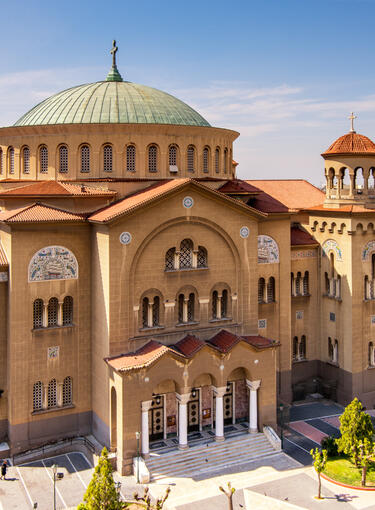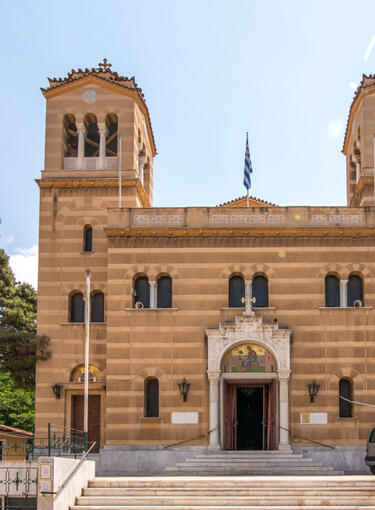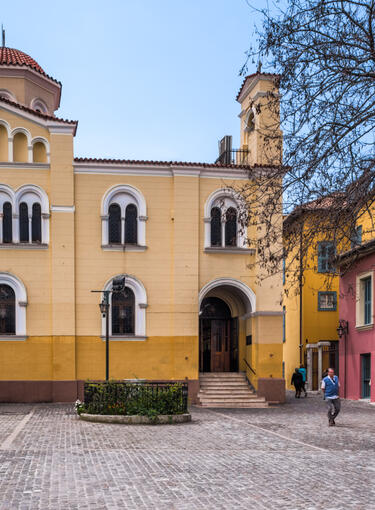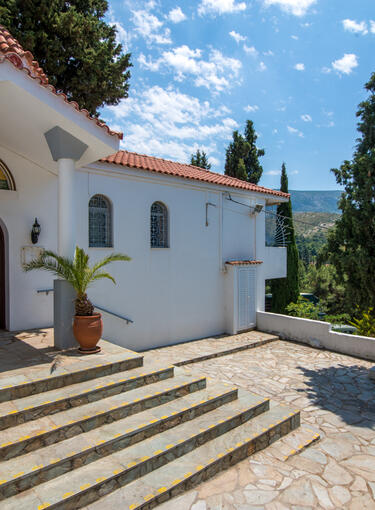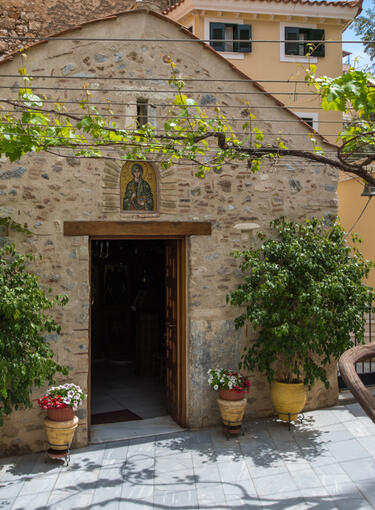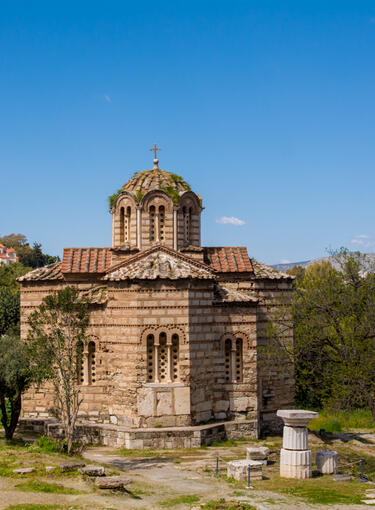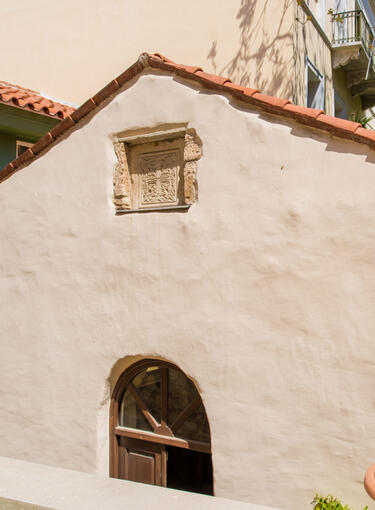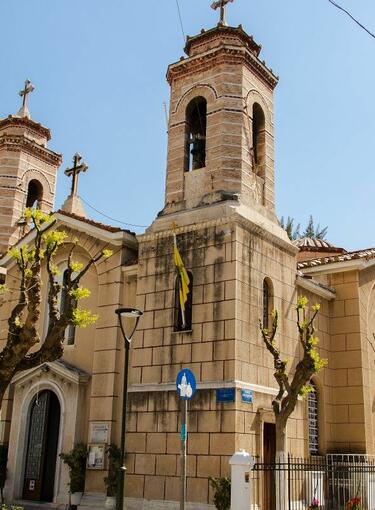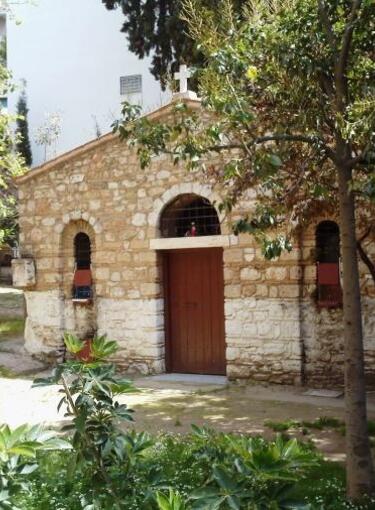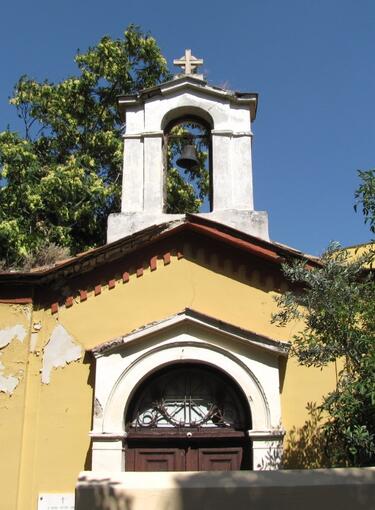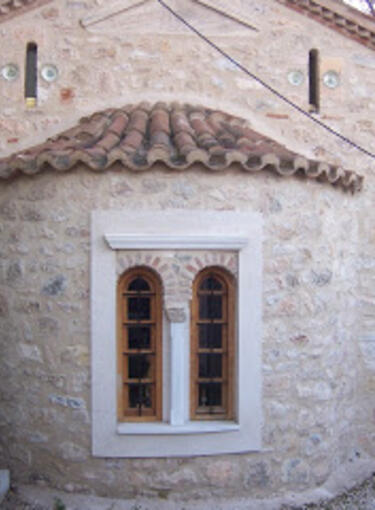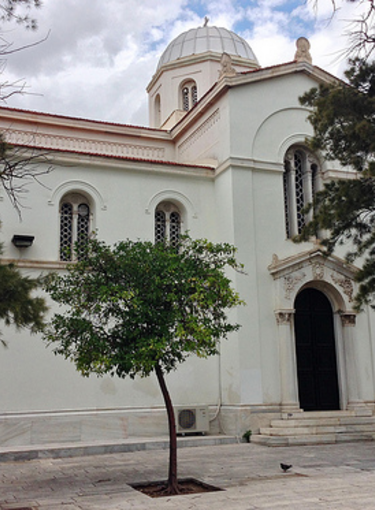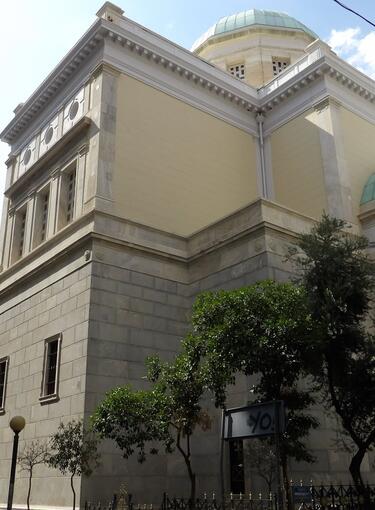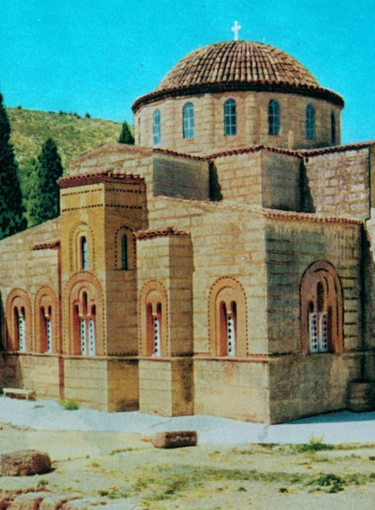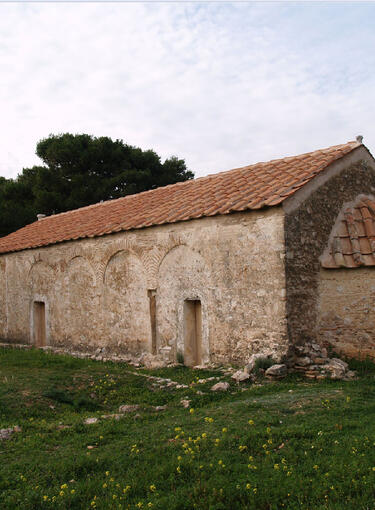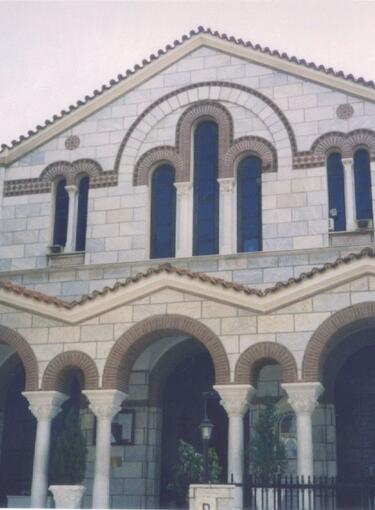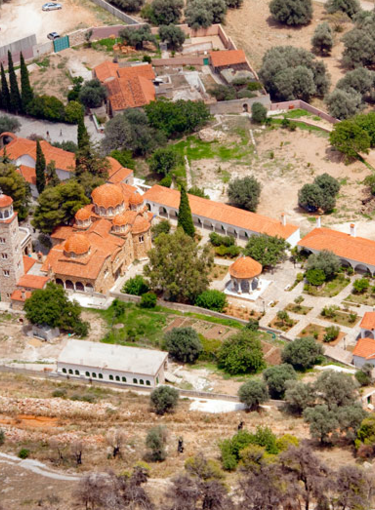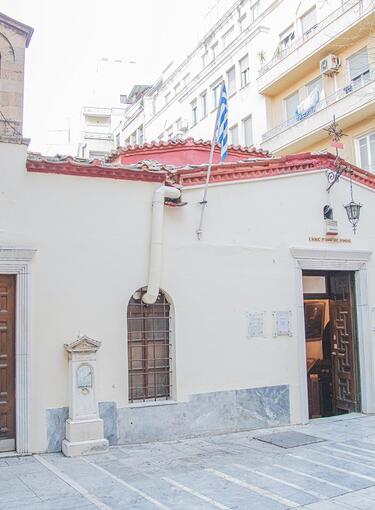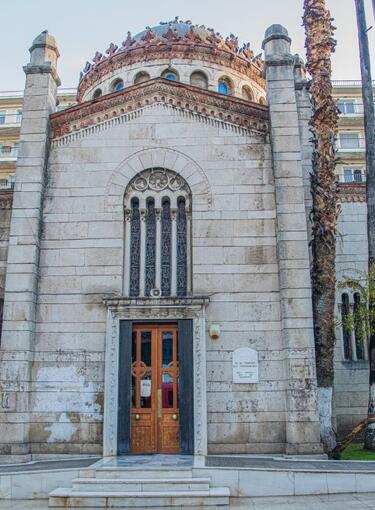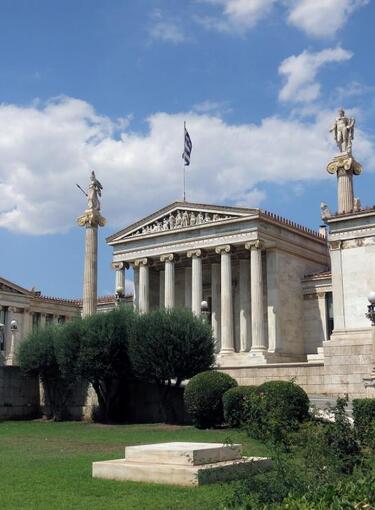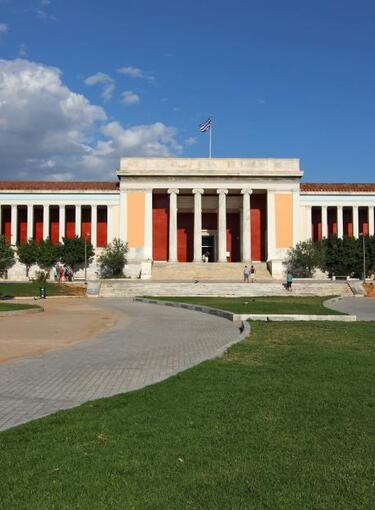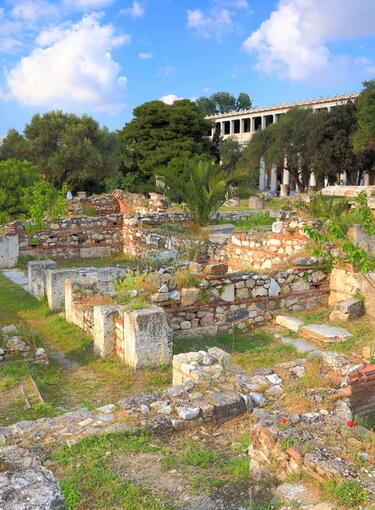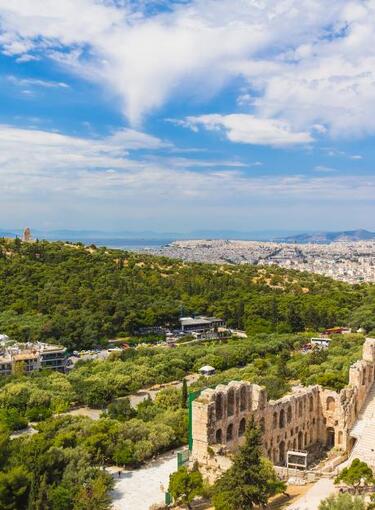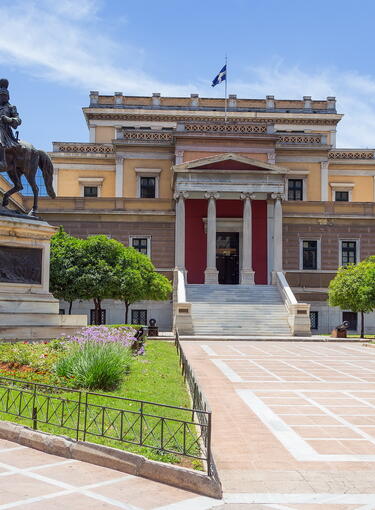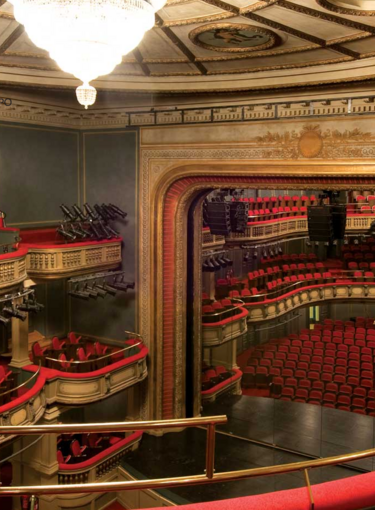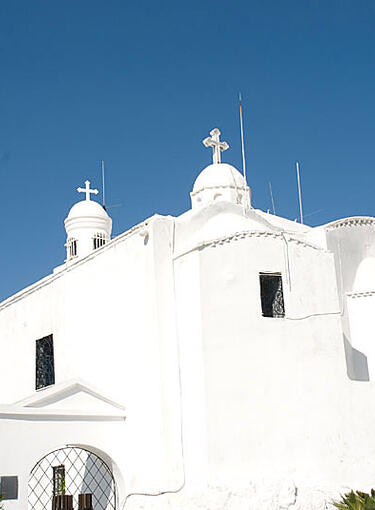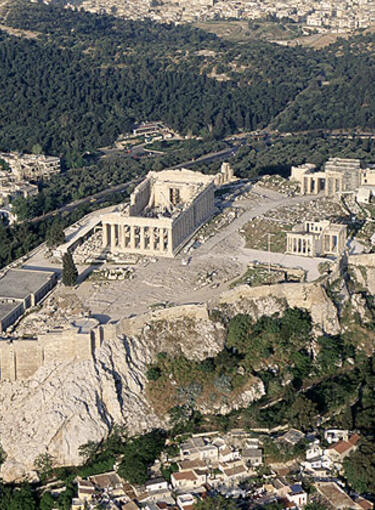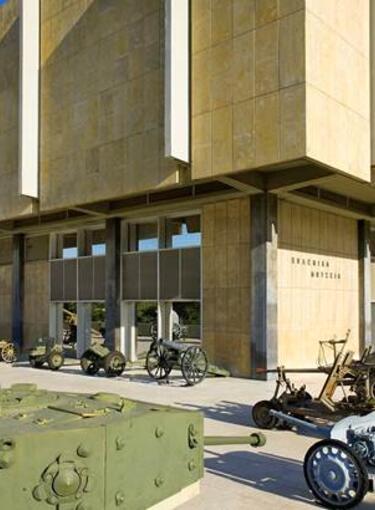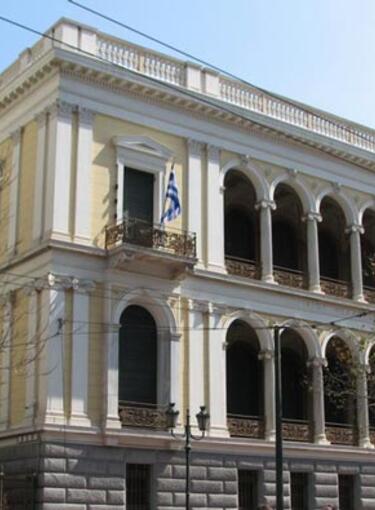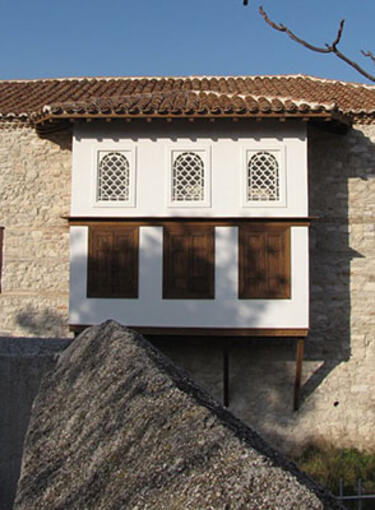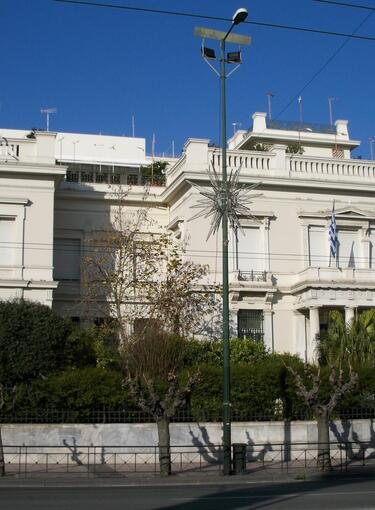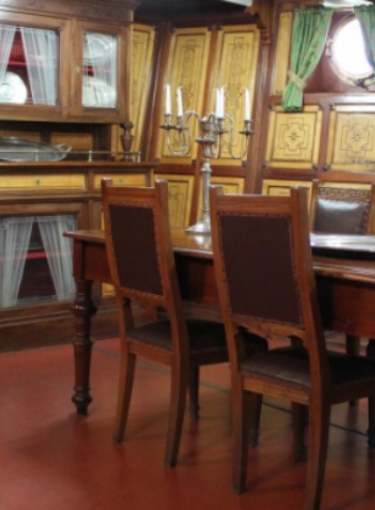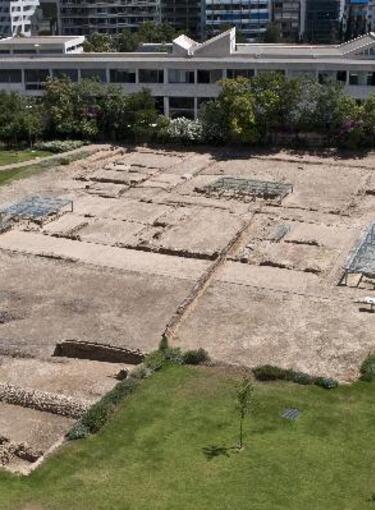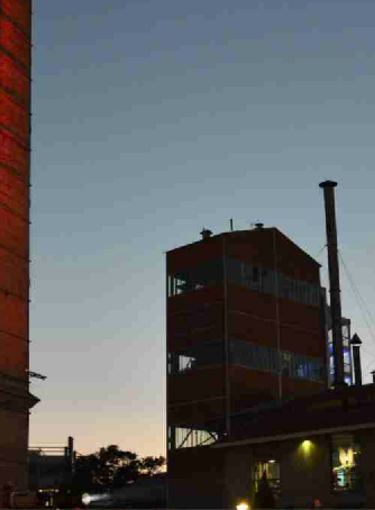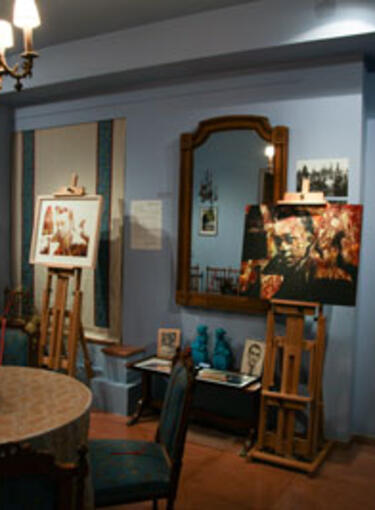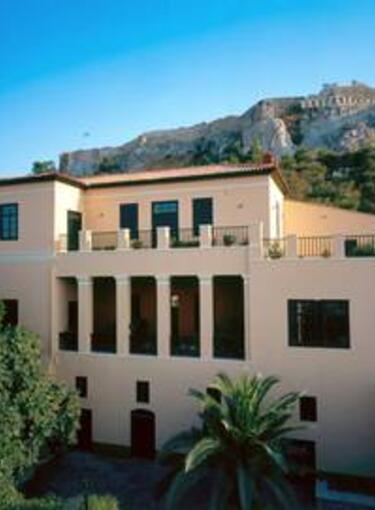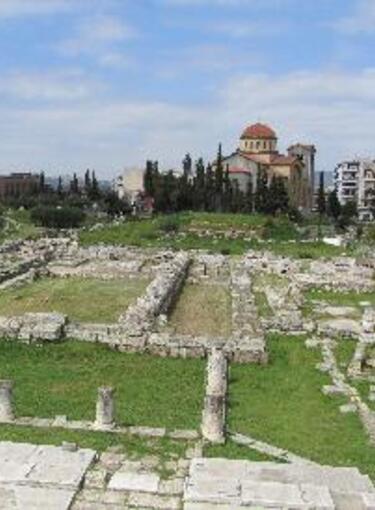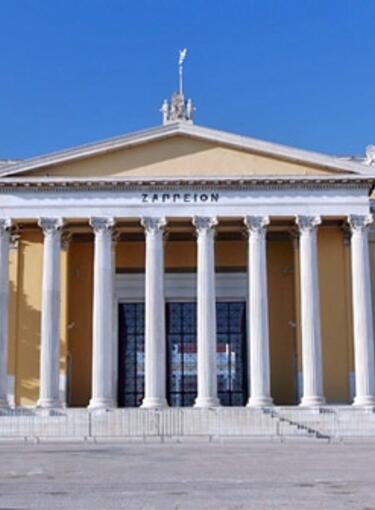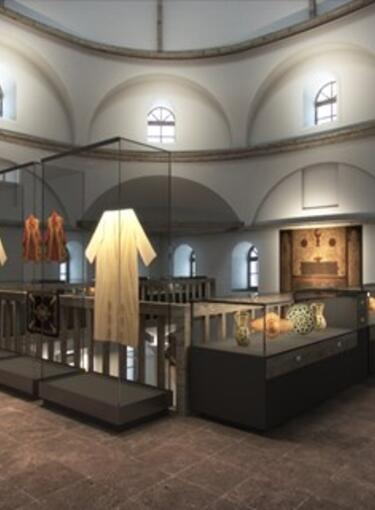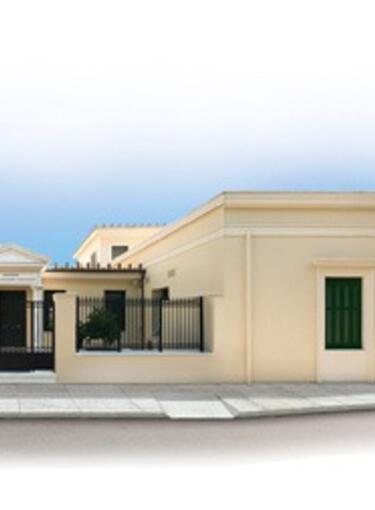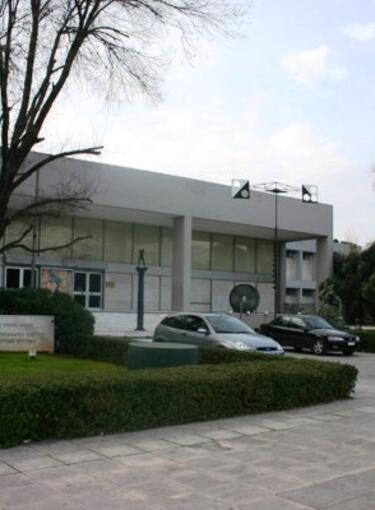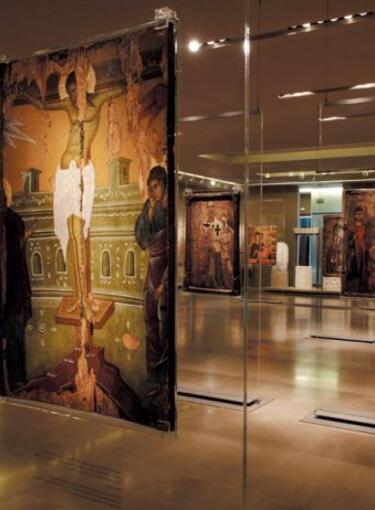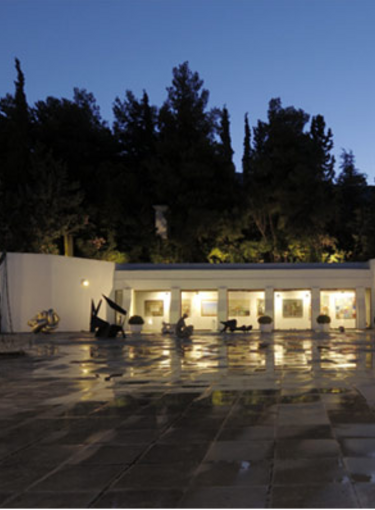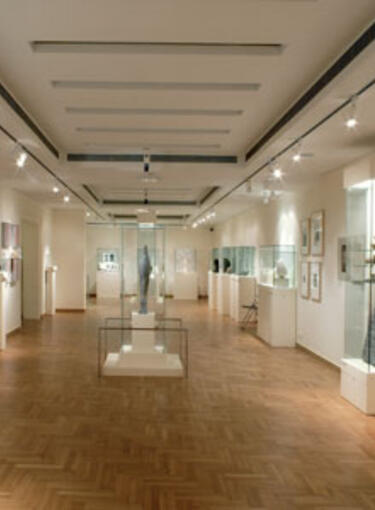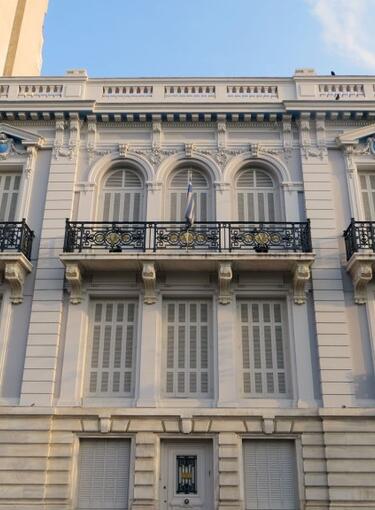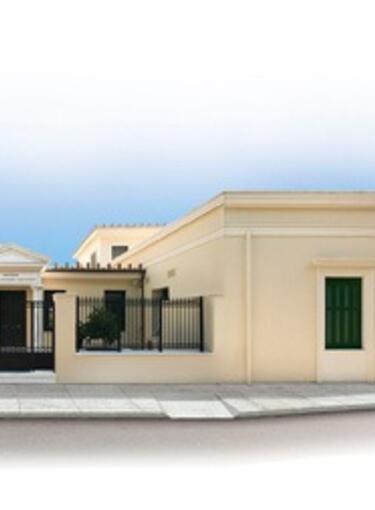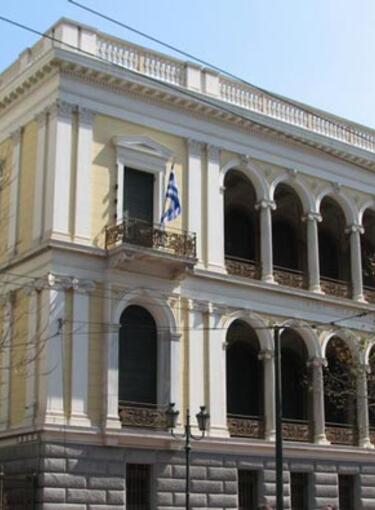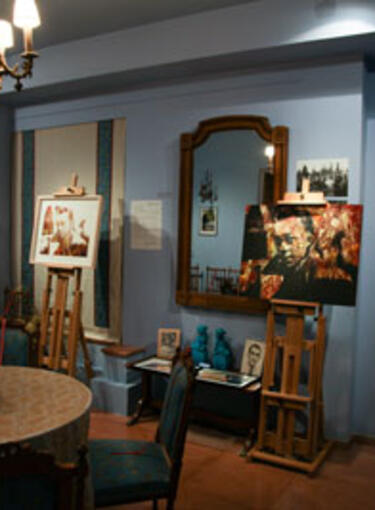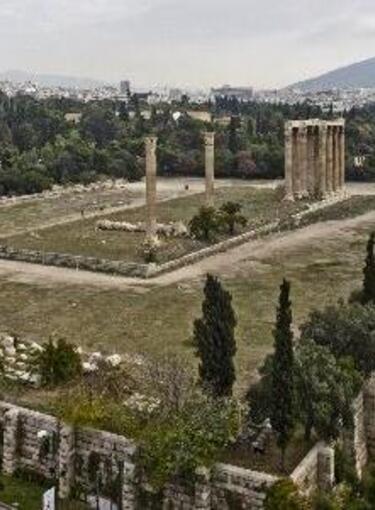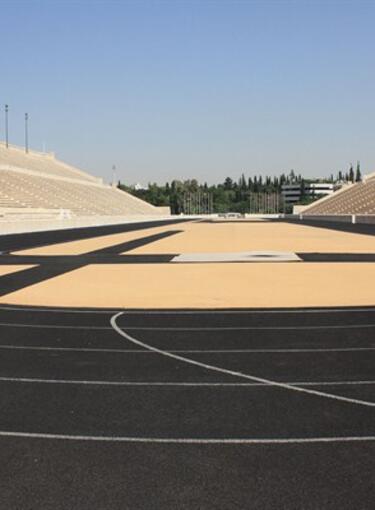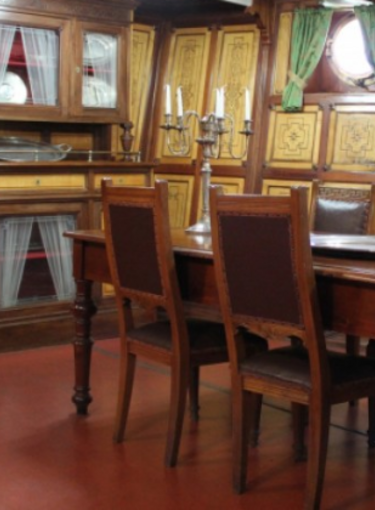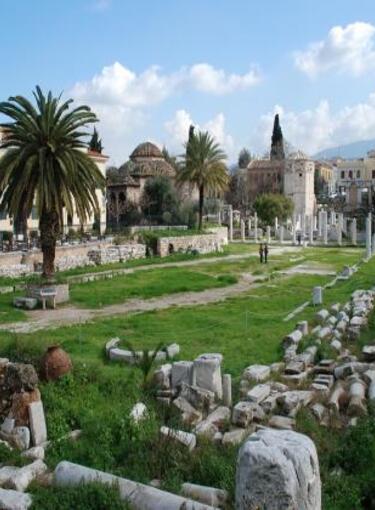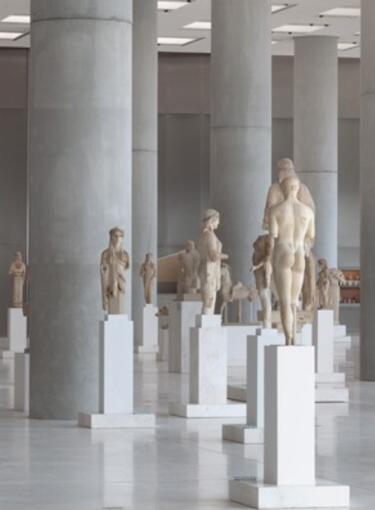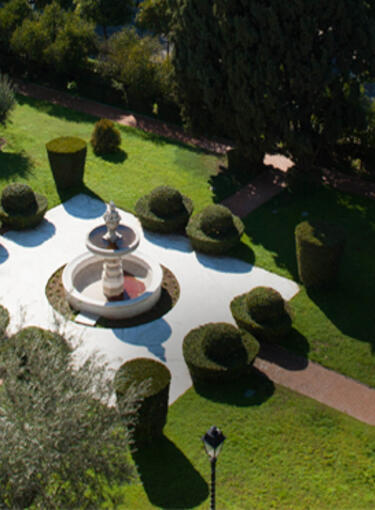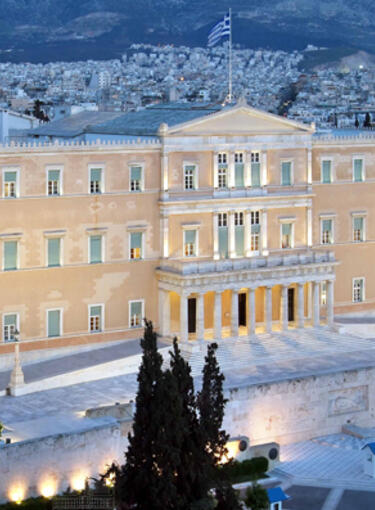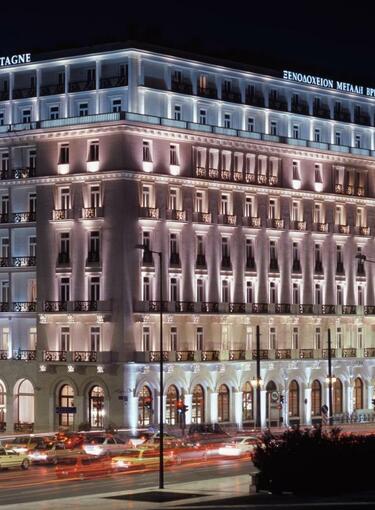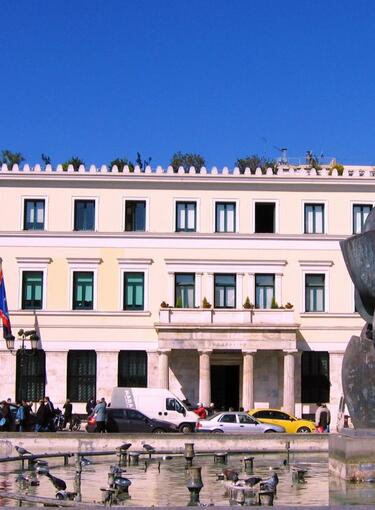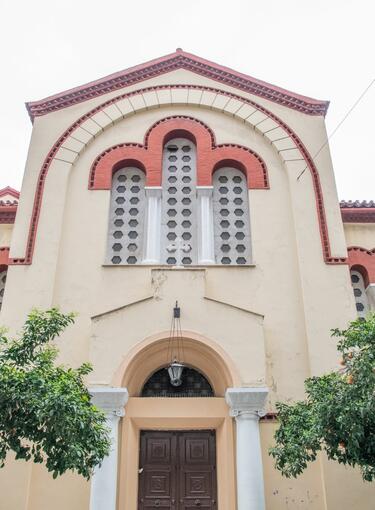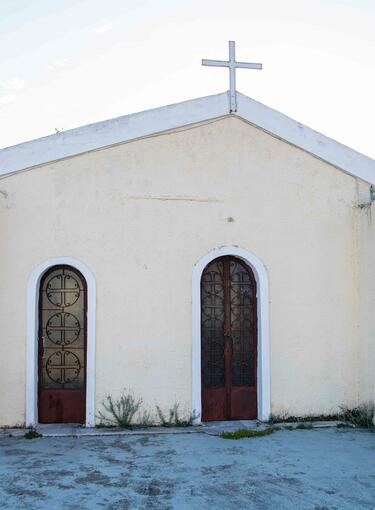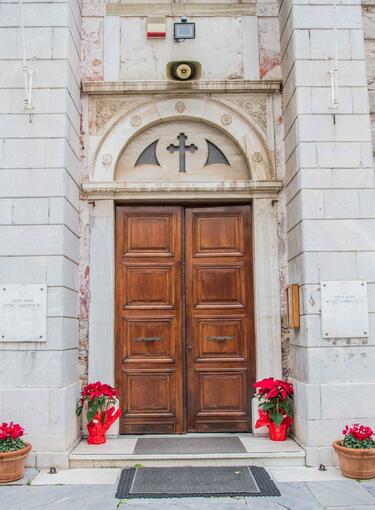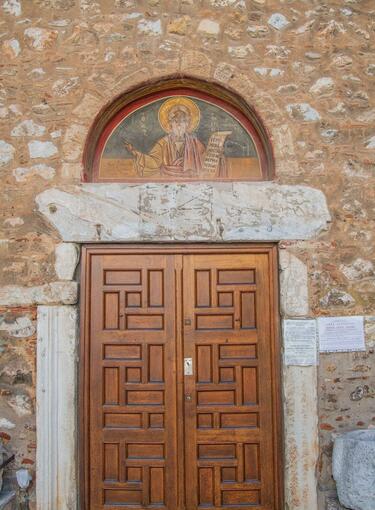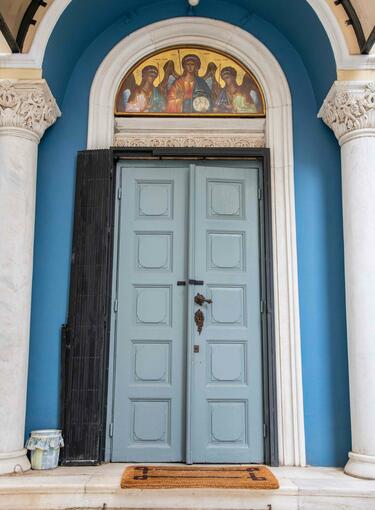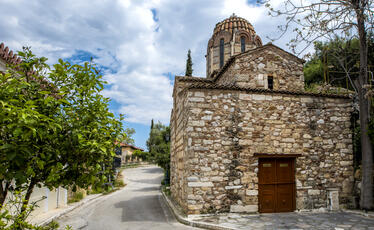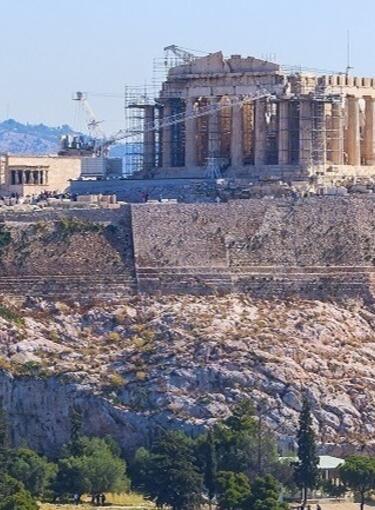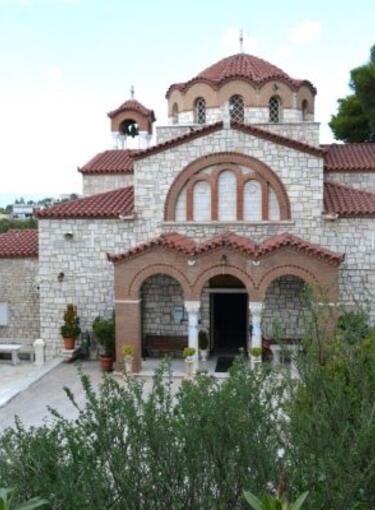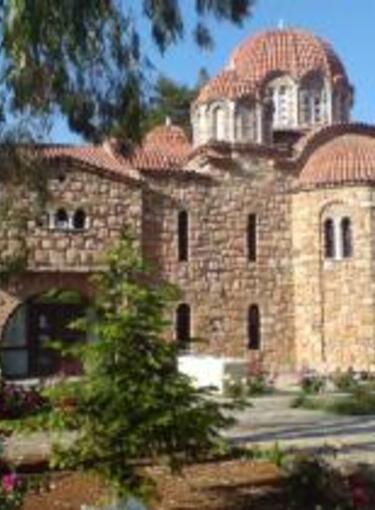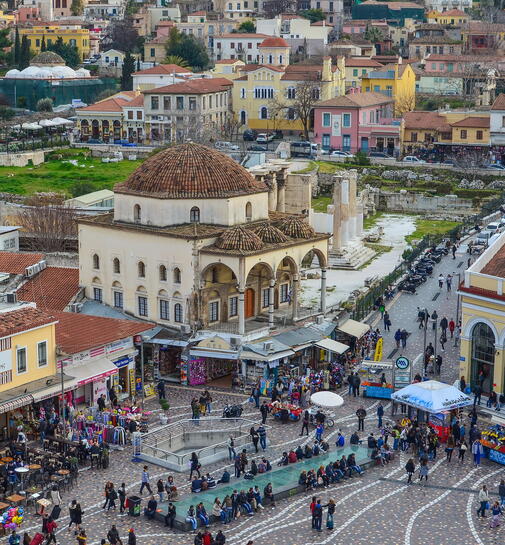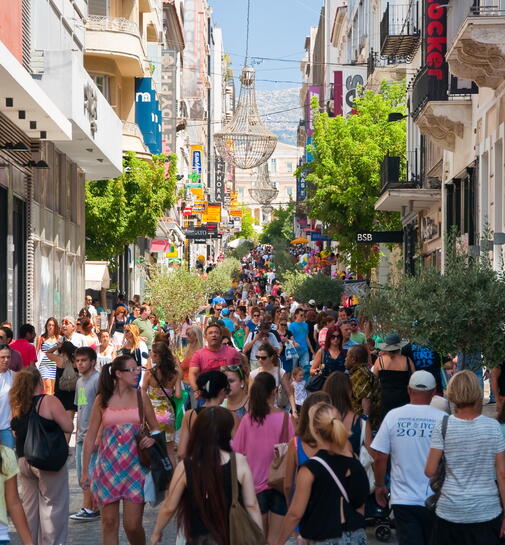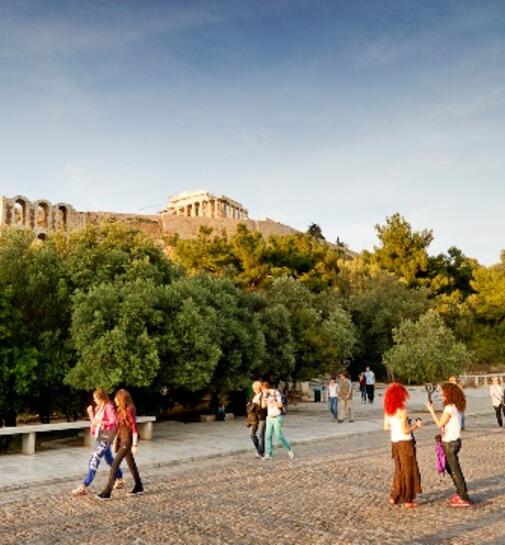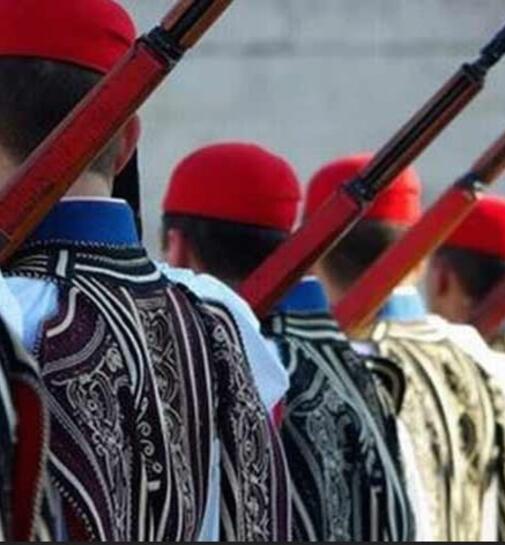The church of Agios Ioannis Theologos is located at the picturesque district of Plaka, a great tourist attraction, at the intersection of Erechtheos and Erotokritou streets.
The church dates from the end of the 11th century or the beginning of the 12th. To this dating also leads us a bronze coin of Alexios I Komnenos (1081-1118), which was found on its roof.
We have very limited information about the history of the monument. The historian K. Zisiou tells us that near the church the Venetian general Morosini had set two canons which destroyed the Parthenon in 1687, during the siege of the Acropolis. Its good maintenance is due to the restorations that were carried out to the monument in the period 1975-1976.
Architecturally, the church belongs to the type of a two-columned, cross-in-square church with an eight-sided “Athenian” dome. On the east there are three-sided apses and on the west a narthex.
It has been erected with the characteristic, for that period, cloisonné masonry, in which stones are framed by bricks, while it is decorated by ceramic elements.
Of particular interest are the preserved parts of the wall paintings which date from the 13th century and is the product of a local craftsman. At the dome we can see the Pantokrator and at the arch of the altar the Ascension of Christ. At the prosthesis a saint on a horse is depicted and one can see the heads of saints Constantine and Helen. At the narthex there is a depiction a holy deacon.
It is worth visiting also for the Byzantine wall paintings, since very few exist in the area of Athens.
Church of Saint John the Theologian, Plaka
[Agios Ioannis Theologos, Plaka]
(chapel of the Church of Saint Nicholas Rangavas
Even though the passage of the centuries has indelibly left its traces, the small, picturesque church of Saint John the Theologian in Plaka stands intact, almost, from the time it was built until this day.
The construction of the church is placed chronologically at the end of the 11th and at the beginning of the 12th century. The dating is based both on the architecture of the church as well as a bronze coin which was found on the roof of the church during conservation words (1975-1976) by the 1st Ephorate of Byzantine Antiquities, on which Alexios I Komenos (1081-1118) is depicted.
The church of Saint John the Theologian, that has maintained its Byzantine character over time despite occasional interventions, adorns the northern side of the rock of the Acropolis of Athens.
The church is located at the intersection of Erechtheos and Erotokritou Streets, just a few meters under the Exarchate of the All -Holy Grave, at the renowned and crowded district of Plaka, ‘Anafiotika’.
Nowadays, the church is the chapel of Saint Nikolaos Rangavas and can be visited every year, only during the officiation of the vesper and the Solemn Divine Liturgy, on the 8th of May, when John the Theologian is celebrated.
Tradition spectacularly connects the church with the siege of the Acropolis by the Venetians, in 1657, with Morosini bombarding the northern part of the Parthenon from the courtyard of the church. During these operations, a cannon ball would penetrate the roof of the ancient monument, which at the time was used by the Ottomans for storing gunpowder, blowing up approximately 500 barrels of gunpowder and inflicting incurable blows on it.
Nevertheless, written sources from that period that confirm the fact have not yet come to light, but neither have other testimonies been saved that would allow us to know more about the history of the church, in particular the history that would reveal the circumstances of its construction.
This is a two–columned cross–in–square inscribed chapel which bears the usual Athenian octagonal dome. The dome rests on its eastern side, on two masonry columns, while two capitals from the Roman period have been used to support the western side.
The masonry is also, in turn, modeled on the small Byzantine chapels of the era. In other words, the brick-enclosed system has been applied, while the alternation between the layers created by the white stones and the red bricks give a special and beautiful style. It should be noted that the large stones with which the low parts were bult, on the north side, have not been placed cross–in-square, a fact which distinguishes the church of Saint John the Theologian from the other small Byzantine churches of the city of Athens. The simple stonework, evidence of later maintenance interventions, is evident on the south side and in the apse to the right of the holy step.
Originally, the entrance to the church was through two gateways, with the main entrance located on the west side and the other on the north. Then the north side entrance was built and replaced by a window. The openings of both entrances are adorned by small arches topped by pediments.
The iron arched bell tower that one encounters today next to the entrance, was originally placed above the pediment of the main entrance.
If the exterior of the temple does not manage to magnetize the visitor's eye, the interior of the temple will undoubtedly cause his admiration.
This is because, despite their very humble character, the frescoes that came to light after the conservation interventions of 1975, are among the few of the 13th century that have been preserved to this day.
These are frescoes that were created in local workshops in Athens, and that were later covered by internal coatings.
The figure of Jesus Christ Almighty dominates the dome. In the apse of the Holy Step one can see the Virgin Mary, enthroned, holding the Divine Infant under the presence and cover of an angel, while the depiction of the Ascension adorns the apse of the Holy Step.
At the northern side of the church, in the chancel, one observes with ample clarity the Ascension while the chancel is decorated, to a large scale, by the mounted depiction of Saint George. The Saint is depicted in three-quarter length, and a tunic with sleeves covers the body of the Saint up to the knee. Discernible, also, is a metal breastplate and black mid-shin shoes. Noteworthy is the haloed head of the Saint with the dark and unusual straight hair and the intense eyes.
The frescoes of the south wall of the chancel include two whole–body military martyr Saints. To the left, the Saint is of young age, beardless, with straight hair and possibly a depiction of Saint Dimitrios. To the right, an apparently older Saint is preserved, from the middle of the face to the feet. In both cases, the Saints wear tunics with wide sleeves, in accordance with the usual depictions of military martyrs of the early Christian period.
Just under the military martyrs one discerns the heads of the Saints Constantine and Helen. Constantine the Great wears a decorated pearled Byzantine crown with the characteristic cross protruding. From the depiction of Saint Helen, one discerns only the face with the expressive eyes. Between the holy step and the chancel, in the barrel–vault, the icon of Saint Romanos is preserved in very good condition Finally, Saint Basil can be depicted in the narthex on the south wall.
Informations
Additional
Date:
late 11th - early 12th c.α
Season:
Byzantine
Celebrates:
8 May
Holy Metropolis:
Archdiocese of Athens
Under the Supervision of:
Ephorate of Antiquities of Athens
Address:
Erechtheos & Erotokritou, Plaka


